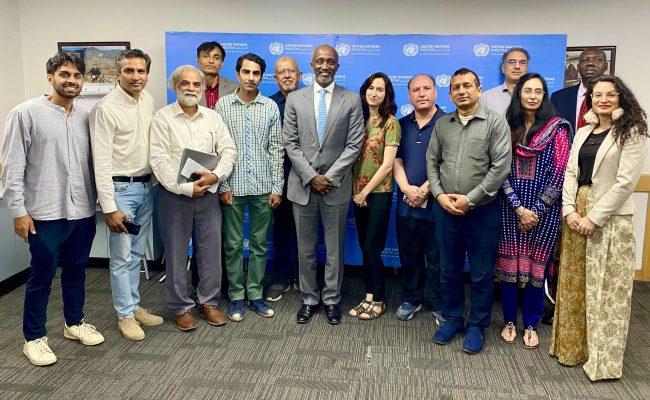By Adnan Hameed
TWA
______
An estimated 200,000 people in Pakistan could be significantly impacted by the upcoming monsoon season, which is forecasted to bring unusually heavy rains. This warning was issued by Mohamed Yahya, the newly appointed Resident Coordinator and Humanitarian Coordinator for the United Nations in Pakistan, during an introductory meeting with both international and national journalists at the United Nations Information Center in Islamabad, underscoring the importance of coordinated efforts to combat the impacts of climate change and ensure timely response to emergencies.
Mohamed Yahya announced that the United Nations, in collaboration with local authorities, has formulated a comprehensive contingency plan. This plan includes a $40 million allocation to address potential emergencies arising from the anticipated heavy rainfall. “We are prepared to respond swiftly and effectively to any emergencies,” Yahya emphasized.
Weather forecasters in Pakistan predict above-normal rainfall in the coming weeks, although it is not expected to reach the catastrophic levels of the 2022 monsoon, which resulted in 1,739 fatalities and extensive damage, submerging up to one-third of the country at its peak. The 2022 disaster inflicted over $30 billion in damage to Pakistan’s economy, which was already struggling.
Pakistan, among the nations most vulnerable to climate change, faces significant challenges due to its northern glaciers melting and warmer air carrying more moisture, leading to intensified monsoon rains. The country’s weather patterns have shifted, compelling cities to enhance infrastructure resilience and farmers to adapt agricultural practices.
Despite contributing less than 1% to global carbon emissions, Pakistan is disproportionately affected by climate-induced disasters. In recent years, frequent droughts, heatwaves, and heavy rains have severely damaged infrastructure, including roads, bridges, and power systems, impeding economic growth.
This year, Pakistan experienced its wettest April since 1961, with rainfall more than doubling the usual amount. As temperatures soared to 48 degrees Celsius (118 degrees Fahrenheit) in various regions, authorities urged people to stay indoors, hydrate, and limit unnecessary travel. The UN is also in close communication with Pakistan’s Ministry of Climate Change, which is developing its own contingency plans for the monsoon season, running from July to October.
A recent UN children’s agency study indicated that Pakistan could prevent 175,000 deaths by 2030 through the development of resilient energy systems for health facilities. As the country braces for the monsoon, there is a critical need for preparedness and resilience to mitigate the potential impacts of climate change on its population and economy.


